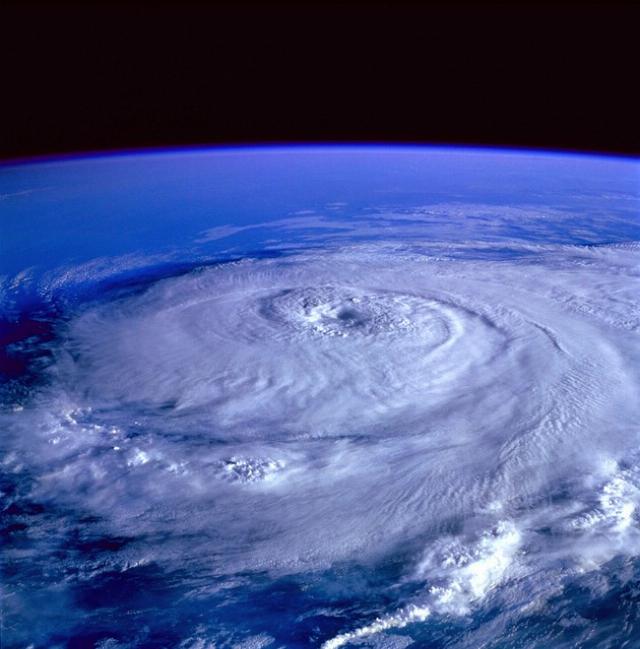Hurricane facts vs. climate fiction
Following two back-to-back hurricanes that severely pummeled the Southeastern United States, climate activists have swooped in like vultures, blaming political conservatives for the destruction wrought by Helene and Milton. At MSNBC, Chris Hayes spouts, “We have known for decades that our planet is warming and that we would start seeing the brutal effects. But conservatives remain so deep in their denial that they are flailing around for anyone or anything else to blame.”
While many attempt to falsely connect hurricanes to anthropogenic climate change, the truth is these monster storms are a natural and necessary function of our planet’s atmosphere. But that didn’t prevent CNN from posting a piece wildly declaring, “Helene was supercharged by ultra-warm water made up to 500 times more likely by global warming.”
Hurricane season in the Atlantic Ocean traditionally begins on June 1, as the equatorial waters warm to near-80 degrees Fahrenheit, the minimum temperature required for a hurricane to form. Water temperature is often considered the fuel for a hurricane because as the warm water evaporates it subsequently condenses within the storm releasing latent heat. However, there are a multitude of other factors that must be present for hurricane formation including a storm’s distance from the equator, light winds blowing into the center of the storm, high humidity values, and something we refer to as the “saturated adiabatic lapse rate” which is basically the rate at which saturated air cools with altitude. When all of these ingredients are in perfect sync, a hurricane begins to form.
Dr. Neil Frank, longtime head of the National Hurricane Center, contends the total number of hurricanes each year ebbs and flows in sixty-year cycles. On the average, each year there are ten tropical storms (wind speeds less than 74-mph) that develop over the Atlantic Ocean, Caribbean Sea, and Gulf of Mexico. Six of these storms become hurricanes (wind speeds of 74-mph or more). In an average three-year period, roughly five hurricanes strike the United States coastline, killing approximately 50 to 100 people anywhere from Texas to Maine. Of these, two are typically major hurricanes (winds greater than 110 mph).
The cover endorsement for my recent book, Climate Cult: Exposing and Defeating Their War on Life, Liberty and Property, was written by Dr. Frank. He contends there is no evidence suggesting we are seeing more hurricanes than ever (over the past 170 years of records), and he insists the frequency and intensity of hurricanes has not changed over years. Additionally, Dr. Frank reminds us that hurricanes are a beneficial component of the overall global atmosphere as they act as mechanisms which draw hot air from the earth’s equatorial regions into the jet stream which then transports the natural warmth to the colder latitudes. This allows for expansive and comfortable temperate zones, where most of us live.
But why do recent storms seem worse than ever?
The answer is threefold.
First, there is no doubt property damage, in terms of dollars, is on the rise. This trend is driven by the continued development of expensive property along the coasts putting more value at risk of wind and water damage. Also, flooding has increased due to residential and commercial properties edging right up to the water’s edge. Under these modern circumstances, any given hurricane would cause more damage than it would have in the past. Sadly, the same could be said for the number of lives lost during these storms.
Second is media coverage. Back when I was presenting the weather for both CBS-TV News and KPIX-TV in San Francisco, content producers knew severe weather gains eyeballs. It’s still true on TV today.
Third, there is the ad nauseam, agenda-driven propaganda put forth by activists attempting to pin their climate fiction hoax on deadly hurricanes.
But why is Florida seemingly often in the crosshairs?
Because the “Sunshine State” is a sitting duck. It’s a 500-mile long, 160-mile-wide peninsula extending into the warm waters of the Atlantic and Gulf of Mexico with 1,146 miles of coastline and an average elevation of a mere 100-feet. Given that the average hurricane is about 300-miles-wide, the Florida peninsula is a prime target for potential disaster. As a result, during this 2024 season, of the nine hurricanes formed to date, four have hit the United States with two terribly striking Florida.
Brian Sussman is an award-winning meteorologist, former San Francisco radio talk host, and bestselling author.

Image: Free image, Pixabay license.
FOLLOW US ON
Recent Articles
- Bureaucratic Displacement in College Institutions
- For Ordinary People, Trump Is The Man Who Will Save The West
- Starmer Wants Trump’s Free Trade Deal—But Free Speech Comes First
- Here is the One Thing Trump Needs to Do That Changes EVERYTHING: Prove the 2020 Election was Stolen
- President Trump Fights Back
- Weaponizing Immigration: Lawfare by Class Action Threatens Our Republic
- Jesus and Academia
- Katy Perry, Astronautesse and Unifying Force
- Small Business and Cybersecurity
- No One Is Above the Law—Including Letitia James
Blog Posts
- Truman did it. Why can’t we let Musk try?
- The U.K. gets it right: ‘Trans’ women are not women
- The left cannot and will not stop itself
- Please don’t lower the rim!
- Is there a moral imperative in trade?
- Kilmar Angel, you're no angel to me
- Hamas can no longer afford to pay for its pot-bellied terrorists -report
- Kilmar Abrego Garcia: The Soros connection
- In maniacally woke Britain, the Supreme Court recognizes biological sex
- A deplorable explains the animosity for Trump as he cleans up Biden’s messes
- Karmelo Anthony is OJ Simpson all over again
- We should beware of terrorists in suits and ties
- Karmelo Anthony’s family starts selling merch, and his fixer pushes ‘celebrity’ status with a bizarre social media video
- Harvard tells Trump to give it money or it’ll shoot the monkey
- Democrats infatuated with criminals and gang members — American citizens? Not so much






